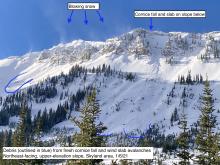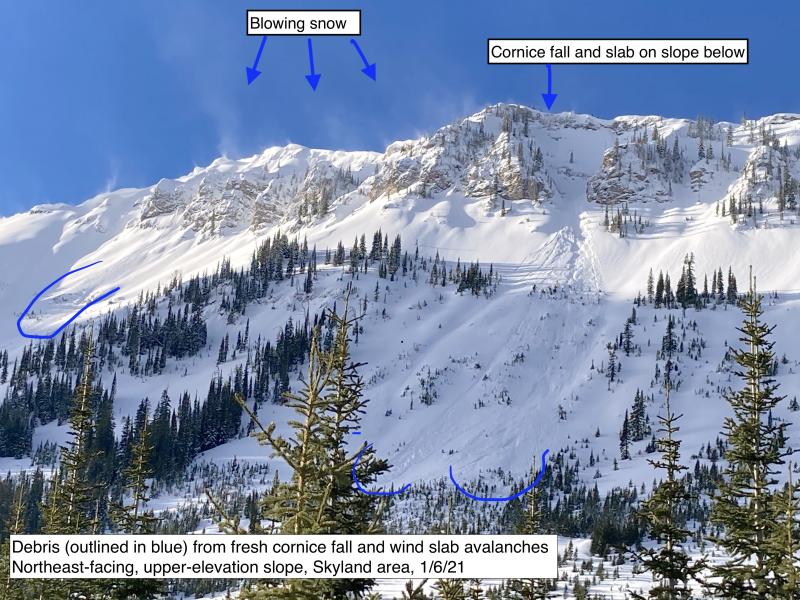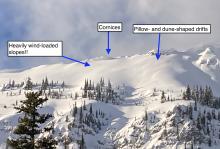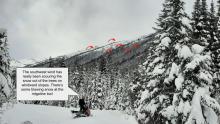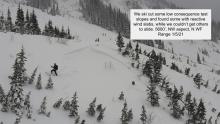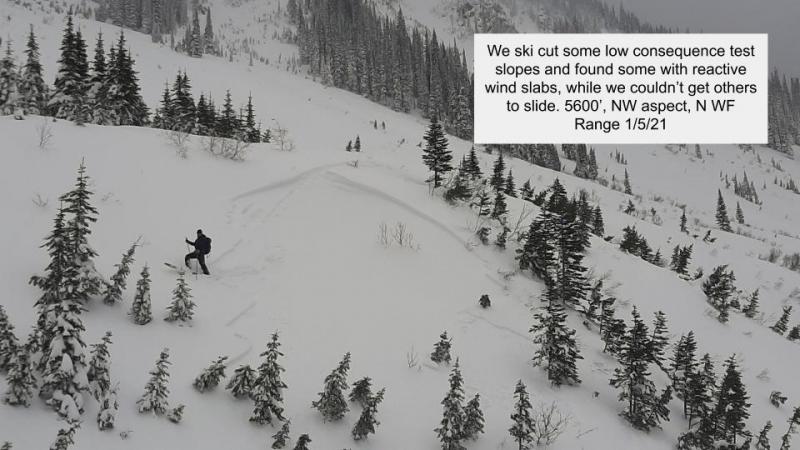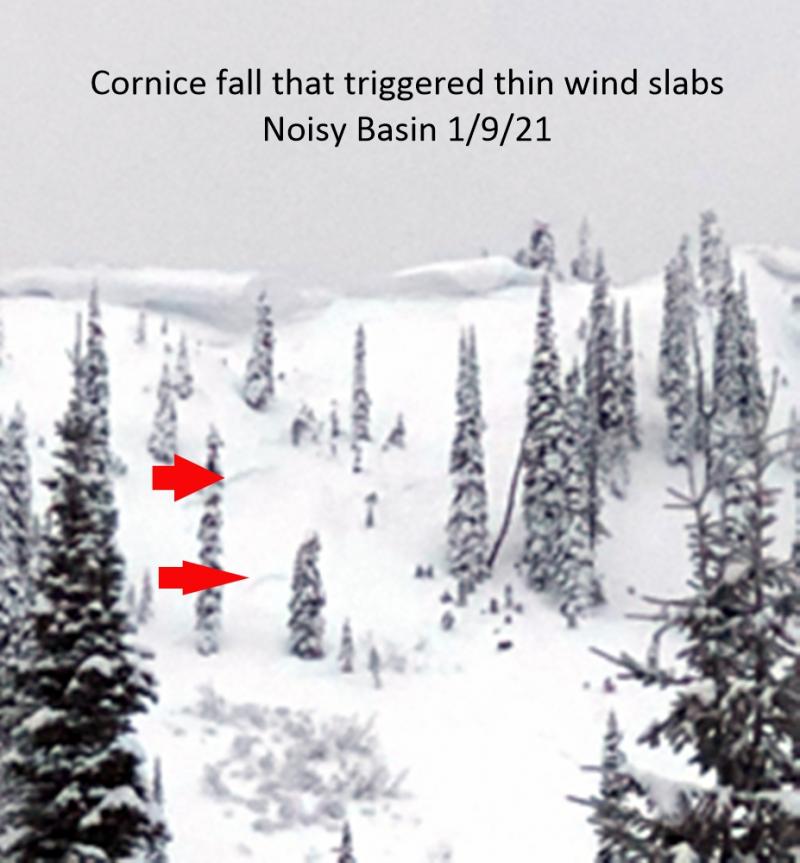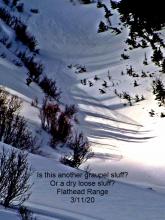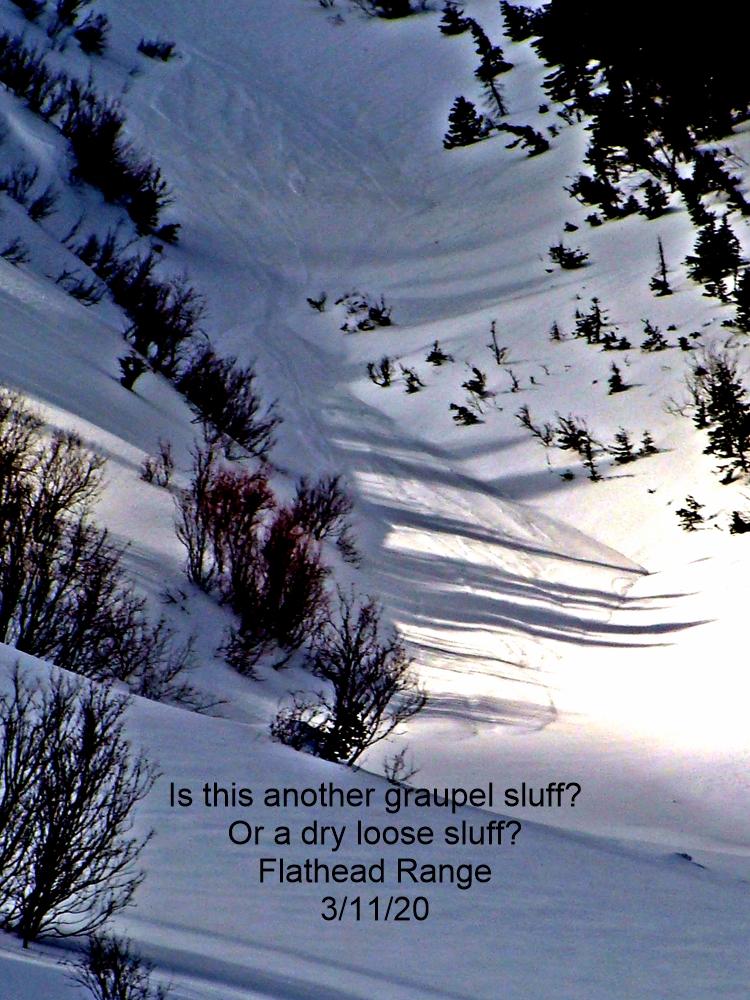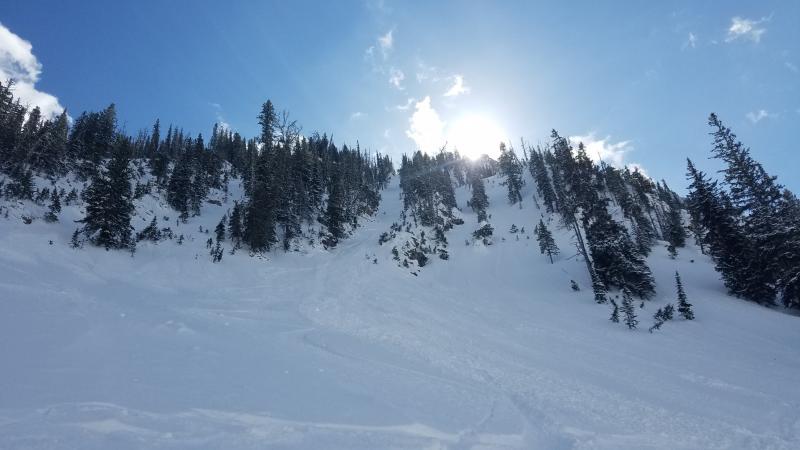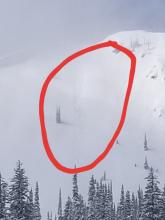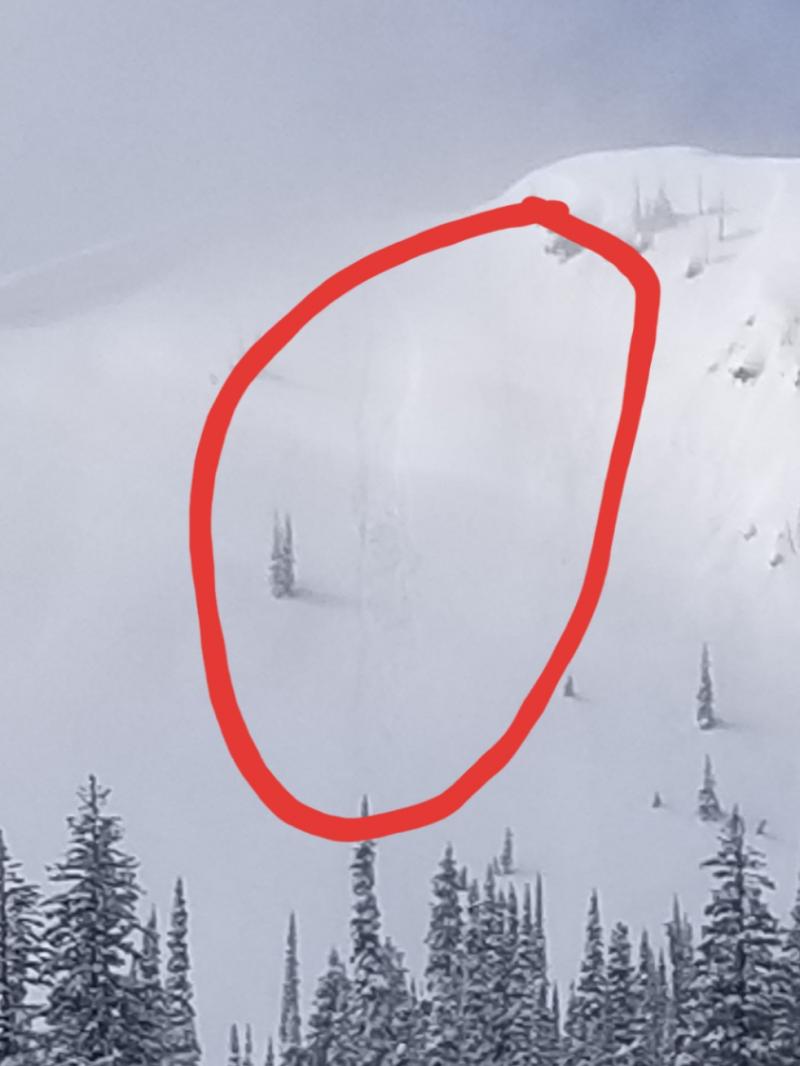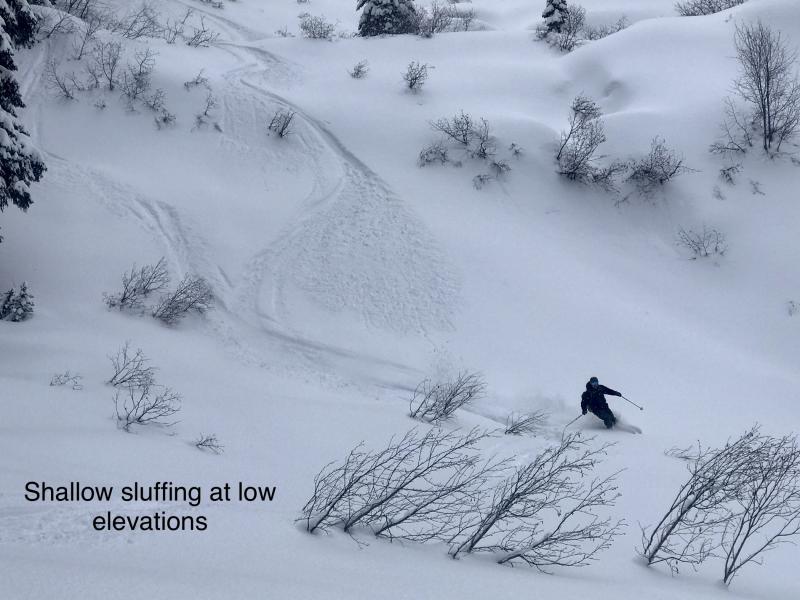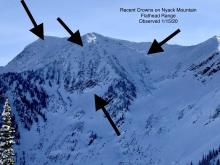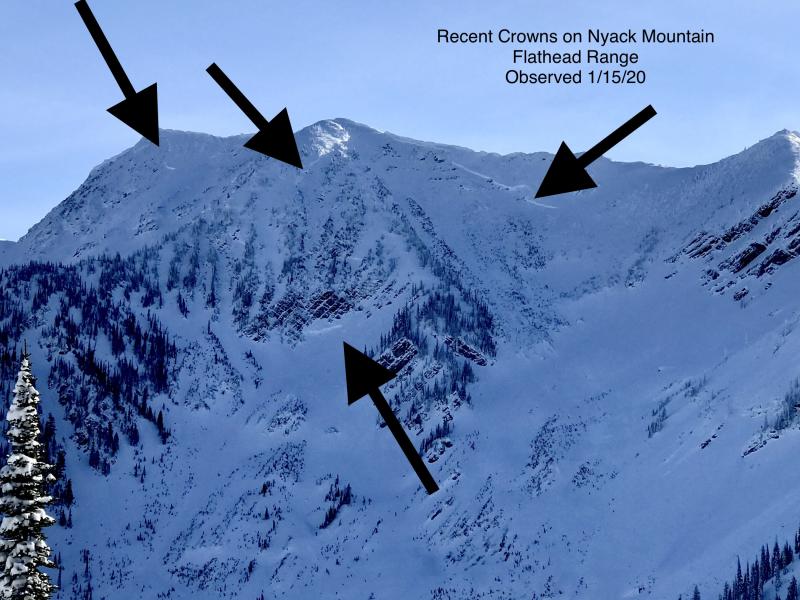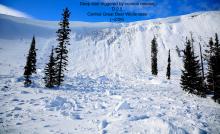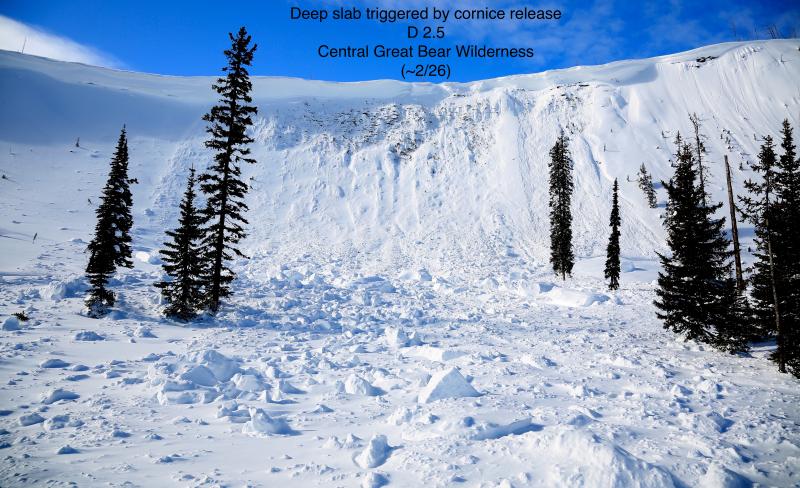| Thursday | Thursday Night | Friday | |
|---|---|---|---|
| Cloud Cover: | Increasing Clouds | Mostly Cloudy | Mostly Cloudy |
| Temperatures: | 21 to 29 deg. F. | 4 to 10 deg. F. | 8 to 16 deg. F. |
| Wind Direction: | West | North | Northeast |
| Wind Speed: | 12G23 | 13G24 | 22G36 |
| Snowfall: | 0" in. | 0" in. | 2" to 3" in. |
| Snow Line: | 1000' | 1000' | 0' |
Flathead Range and Glacier National Park
How to read the forecast
Winter has returned to the Flathead, along with winter avalanche problems. Watch for recently drifted snow on the down-wind sides of ridges and on the sidewalls of chutes. Assess how well slabs are bonding before committing to bigger terrain. In very steep, sheltered areas, loose snow may sluff and entrain more debris than expected. Shooting cracks in dense drifts, or recent loose dry avalanches should raise your hackles.

2. Moderate
?
Above 6500 ft.
2. Moderate
?
5000-6500 ft.
1. Low
?
3500-5000 ft.
- 1. Low
- 2. Moderate
- 3. Considerable
- 4. High
- 5. Extreme
-
Type ?
-
Aspect/Elevation ?

-
Likelihood ?CertainVery LikelyLikelyPossible
 Unlikely
Unlikely -
Size ?HistoricVery LargeLargeSmall

Up to a foot of snow and moderate to strong winds were actively loading leeward slopes above about 5,500 feet yesterday. Small test slopes produced some cracking in the fresh slabs. Blase was turned away from his objective because of wind loading at upper elevations. Slabs have developed atop slick crusts and weak, older snow. They will take time to heal. Assess how well they are bonding on small test slopes before committing to bigger terrain. Look for rounded drifts on the down-wind sides of ridges, trees, and rollovers. Dense snow that cracks around you mean that you can still trigger wind slabs on steep, leeward terrain. Lower slope angles or sheltered terrain are the antidote.
-
Type ?
-
Aspect/Elevation ?

-
Likelihood ?CertainVery LikelyLikelyPossible
 Unlikely
Unlikely -
Size ?HistoricVery LargeLargeSmall

Observers yesterday triggered small sluffs in the new snow. In the Middle Fork, Mark saw natural sluffs of loose graupel. Cold temperatures overnight may prevent loose new snow from settling. There is some uncertainty over how quickly graupel – the loose, Styrofoam ball type snow – will bond. Loose snow can sluff on slopes steeper than about 40 degrees. Slick crusts underneath may allow loose dry avalanches to grow large. Avoid confined terrain where you can’t steer away from your sluff. Terrain traps like creek beds and tree wells below you will allow debris to pile up deeper than expected.
-
Type ?
-
Aspect/Elevation ?

-
Likelihood ?CertainVery LikelyLikelyPossible
 Unlikely
Unlikely -
Size ?HistoricVery LargeLargeSmall

Although slides breaking on weak layers near the ground have become increasingly difficult to trigger, the consequences are unsurvivable. The pattern of deep slabs avalanches this winter has been confined to high alpine bowls and faces in the Flathead Range and Glacier Park on northerly and easterly aspects. Cornice falls are the most likely triggers. Choose routes that reduce your exposure to overhead hazards, including runout zones, and be cautious of alpine slopes with thin or variable snow coverage.
After a warm, and unimpressive start to the month, at last! New snow! It’s like Christmas all over again. Though your presents are either wrapped in dense packaging, or padded with those little Styrofoam balls.
Recent snowfall varied widely across the region. The Swan Range was the loser, for once, with a paltry 3 inches. The Whitefish Range picked about 5 inches or more of new snow. The storm overproduced further east. The Middle Fork and John Stevens Canyon saw heavy convective showers of rimed snow and graupel, and was refreshed with up to a foot of new. The winds were consistent out of the west and observers noted wind loading, shooting cracks, reactive cornices, and sensitive wind slabs. In sheltered areas, skiers could produce small loose dry avalanches. Warm temperatures and rain at lower elevations created rollerballs and a few, small, wet loose avalanches.
Cold temperatures overnight have refrozen lower elevations and maintained the dry, wintry snow and lingering instabilities as you gain elevation. The new snow is loose in sheltered areas and dense where the winds have had their way. Where the most snow fell, it is upside-down in places. It rests on a few inches of very soft snow from Sunday, which in turn sits on top of slick melt-freeze crusts and wind board. Observers in Kimmerly Basin even found a recent layer of surface hoar that was reactive under newer snow.
Winter has returned. Today’s quite weather makes you want to enjoy your 2nd Christmas gifts. But remember that the new snow – slabby or loose – will need time to bond to slick bed surfaces, and the soft weak snow above them. Unwrap your presents with caution. You may find a white elephant if you’re not careful.
Today will be mostly clear until clouds build down from Canada ahead of the next cold front. Temperatures will be more seasonable before dropping precipitously with the incoming arctic air. Winds have tempered from a roar to a yawn. That changes with the next winter weather system this weekend.
This forecast applies only to backcountry areas outside established ski area boundaries. The forecast describes general avalanche conditions and local variations always occur. This forecast expires at midnight on the posted day unless otherwise noted. The information in this forecast is provided by the USDA Forest Service who is solely responsible for its content.



